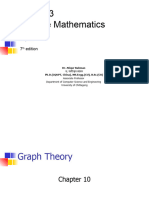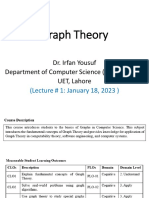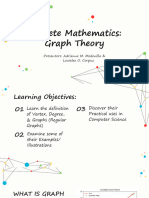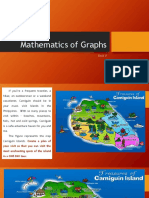0% found this document useful (0 votes)
17 views23 pagesUnit 4 Graphs
The document provides an overview of graph theory, defining key concepts such as vertices, edges, and various types of graphs including directed, undirected, and weighted graphs. It discusses applications of graphs in fields like computer science, networking, and transportation, as well as graph representations like adjacency and incidence matrices. Additionally, it covers important topics such as Eulerian and Hamiltonian cycles, graph isomorphism, and the historical Königsberg Bridge Problem.
Uploaded by
namailniknduku2879Copyright
© © All Rights Reserved
We take content rights seriously. If you suspect this is your content, claim it here.
Available Formats
Download as DOCX, PDF, TXT or read online on Scribd
0% found this document useful (0 votes)
17 views23 pagesUnit 4 Graphs
The document provides an overview of graph theory, defining key concepts such as vertices, edges, and various types of graphs including directed, undirected, and weighted graphs. It discusses applications of graphs in fields like computer science, networking, and transportation, as well as graph representations like adjacency and incidence matrices. Additionally, it covers important topics such as Eulerian and Hamiltonian cycles, graph isomorphism, and the historical Königsberg Bridge Problem.
Uploaded by
namailniknduku2879Copyright
© © All Rights Reserved
We take content rights seriously. If you suspect this is your content, claim it here.
Available Formats
Download as DOCX, PDF, TXT or read online on Scribd
/ 23



























































































